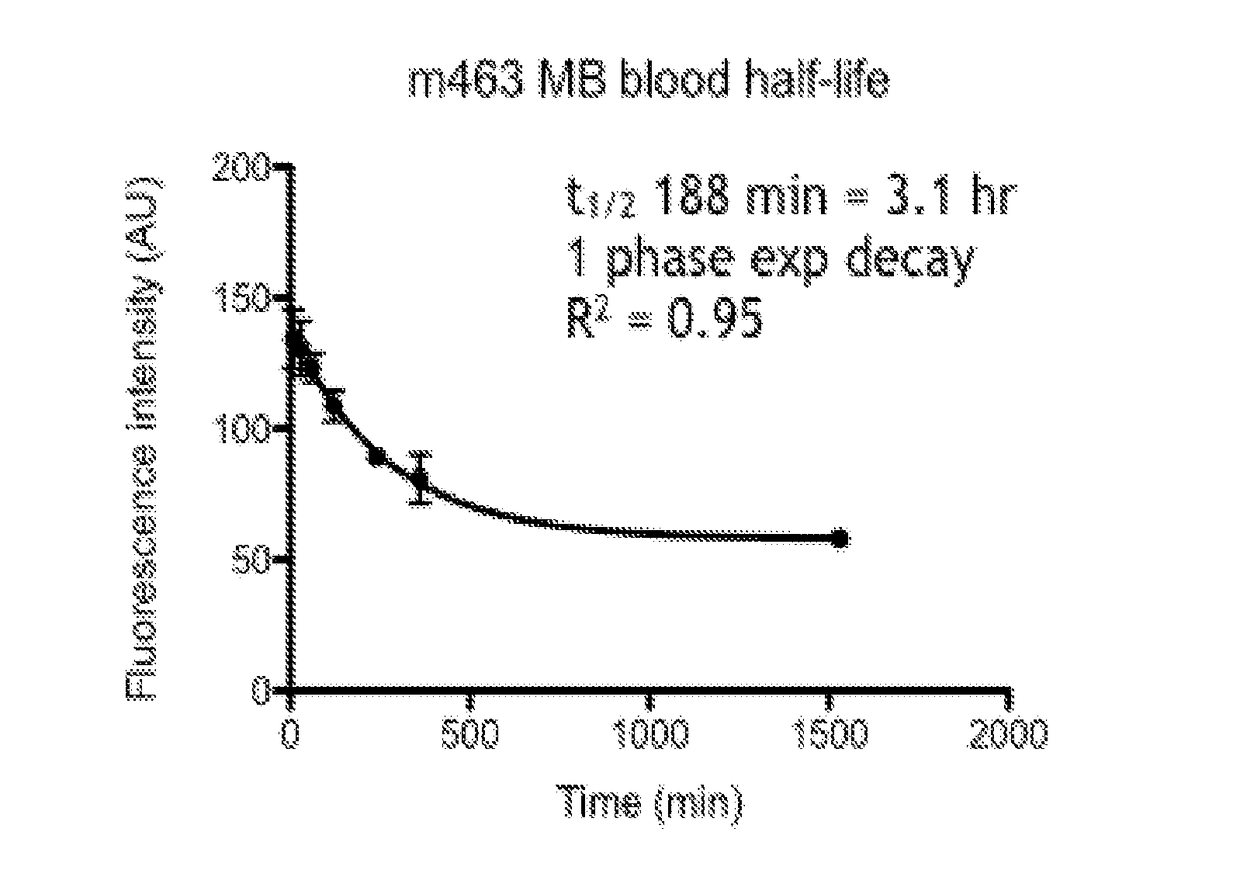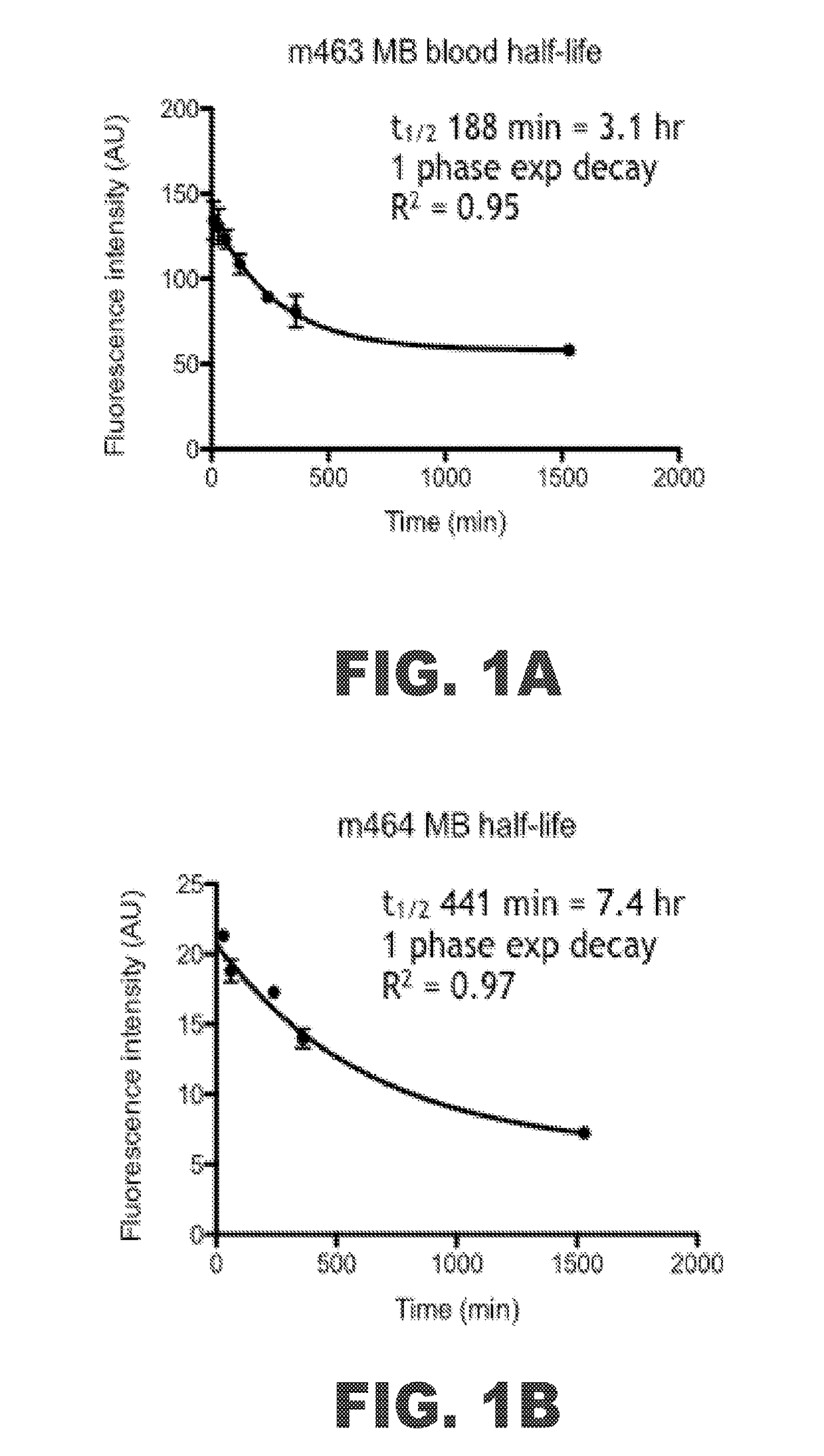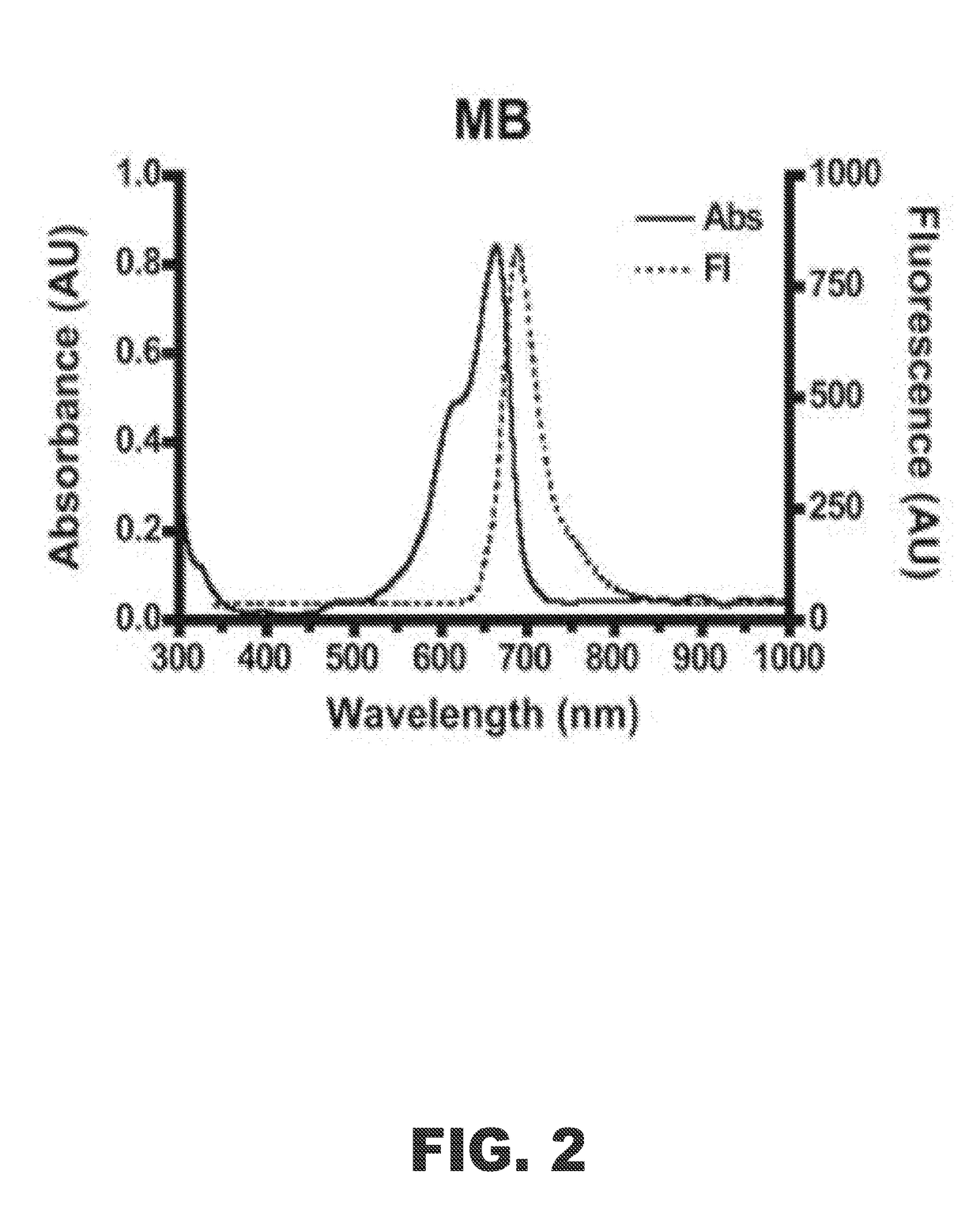Atherosclerosis imaging agents and methods of using the same
a technology of atherosclerosis and imaging agents, applied in the field of atherosclerosis imaging agents and methods of using the same, can solve the problems of insufficient mr angiograms using gadolinium contrast agents to show atheroma or plaque in the smaller vessels of patients, clinical events, myocardial infarction or stroke, etc., to achieve less leakage or accumulation, less mb leakage susceptibility, and more complex pharmacokinetics
- Summary
- Abstract
- Description
- Claims
- Application Information
AI Technical Summary
Benefits of technology
Problems solved by technology
Method used
Image
Examples
example 1
[0069]Using an atherosclerosis model in rabbits, it has been determined that a routine clinical-type intravenous dose of methylene blue (MB) (1 mg / kg tested) can produce deposition of MB in plaques of rabbits, and can be detected by near-infrared fluorescence (NIRF) imaging.
Methods:
[0070]New Zealand white rabbits (3-4 kg, Charles River Laboratories, n=2) were fed a high cholesterol diet (0.3% total cholesterol, 5% peanut oil; Research Diets) and were subjected to an infrarenal abdominal aorta injury using a 3F Fogarty embolectomy balloon (Edwards Lifesciences). The 3F balloon was inserted percutaneously via the femoral artery, inflated to nominal pressure, and withdrawn under tension and repeated. After recovery from the injury, the rabbits were continued on the 0.3% high cholesterol diet, and their total serum cholesterol levels were routinely measured (Hemagen Diagnostics).
Methylene Blue:
[0071]24 hours prior to atheroma imaging, 1 mg / kg concentration of MB in a phosphate buffer sa...
example 2
[0081]The methylene blue (MB) binding and uptake was evaluated in a rabbit model of atherosclerosis of the abdominal aorta. The half-life for MB in human bloodstreams has been documented as around 5 to 6.5 hours (Peter, Eur. J. Clin. Pharmacol., 2000 56(3):247-50). The half-life for MB in rabbit bloodstreams was measured in two subjects, m463 and m464 that had been subjected to a high cholesterol diet and the high inflammation protocol. FIG. 1A shows a graph of the fluorescence intensity of MB in the bloodstream of m463 over time. The fluorescence intensity had a 1 phase exponential decay. The half-life was found to be 188 minutes, or about 3 hours. FIG. 1B shows a graph of the fluorescence intensity of MB in the bloodstream of m464 over time. The fluorescence intensity similarly had a 1 phase exponential decay. The half-life was found to be 441 minutes, or about 7.4 hours. The average of the MB half-life in the rabbits tested was around 5.25 hours, which falls within the range foun...
PUM
| Property | Measurement | Unit |
|---|---|---|
| Time | aaaaa | aaaaa |
| Time | aaaaa | aaaaa |
| Dimensionless property | aaaaa | aaaaa |
Abstract
Description
Claims
Application Information
 Login to View More
Login to View More - R&D
- Intellectual Property
- Life Sciences
- Materials
- Tech Scout
- Unparalleled Data Quality
- Higher Quality Content
- 60% Fewer Hallucinations
Browse by: Latest US Patents, China's latest patents, Technical Efficacy Thesaurus, Application Domain, Technology Topic, Popular Technical Reports.
© 2025 PatSnap. All rights reserved.Legal|Privacy policy|Modern Slavery Act Transparency Statement|Sitemap|About US| Contact US: help@patsnap.com



